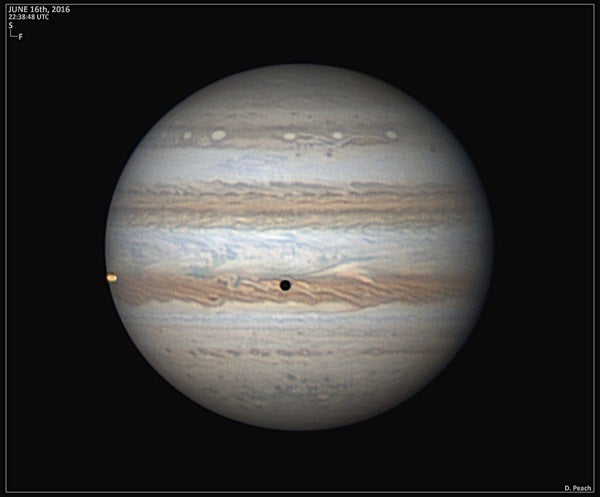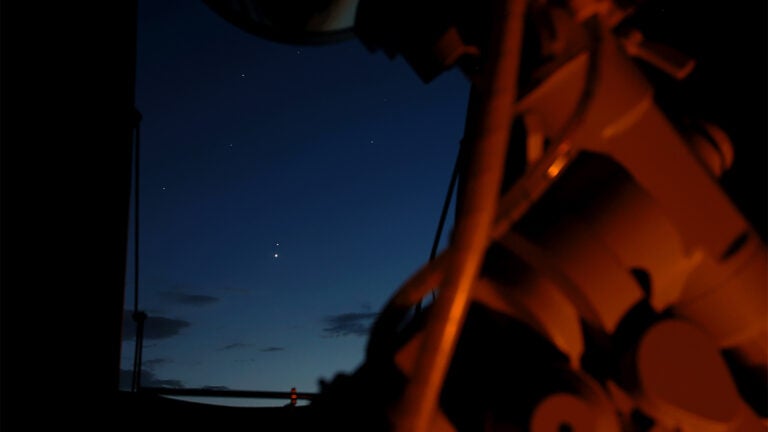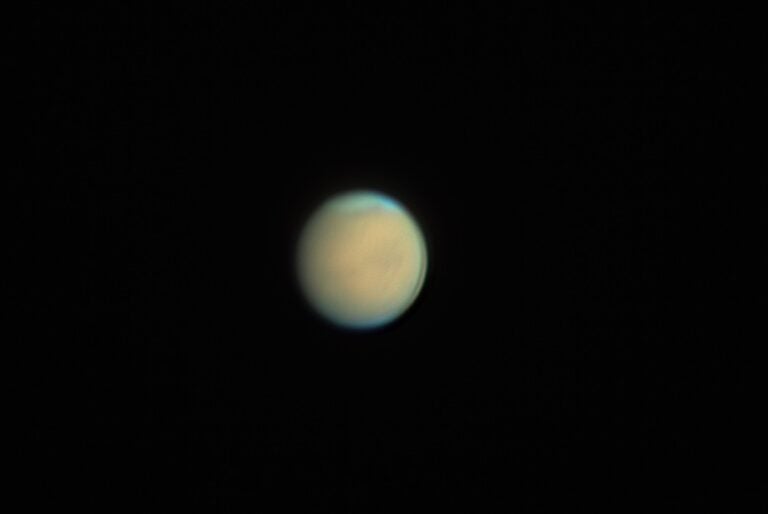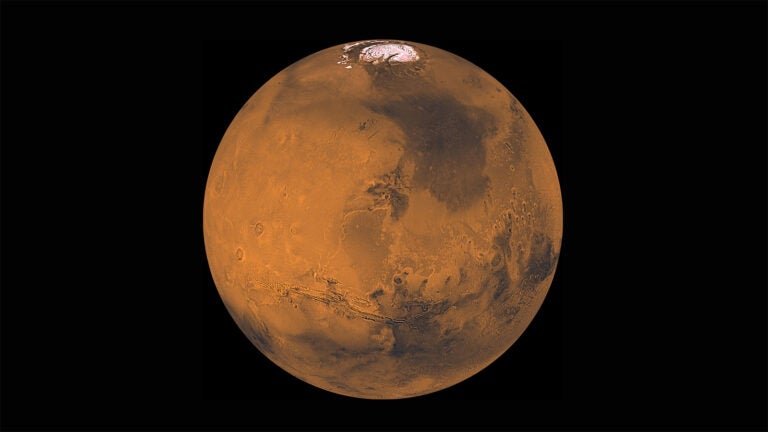Q: Does Jupiter’s illumination (as shown on the monthly planetary table) ever drop below 100 percent? Is there an equation that governs how far out a planet needs to be to never have its illumination drop below 100 percent?
Colorado Springs, Colorado
A: Yes, Jupiter’s illumination occasionally dips below 100 percent, although the giant planet never appears less than 99 percent lit. Unfortunately, this phase effect is hardly noticeable through amateur telescopes except under exceptional observing conditions. Even then, the most you can hope to see is a slight softening along the planet’s eastern or western limb.
Every outer planet shows its minimum phase (when it deviates most from 100 percent) when it reaches quadrature. This is the point in its orbit when the Sun-Earth-planet angle equals 90°, and the planet-Sun-Earth angle, or phase angle, reaches a maximum. The maximum phase angle depends on the object’s orbital radius.
To pursue this, we need a bit of simple math. If theta (θ) is this maximum angle and r is the orbital radius measured in astronomical units (AU, where 1 AU is the average Earth-Sun distance), then θ=arcsin(1/r). Jupiter’s average orbital radius is 5.204 AU while Saturn’s is 9.582 AU, so their maximum phase angles are 11.1° and 6.0°, respectively.
The minimum phase of an outer planet occurs at its maximum phase angle and equals 0.5(1+cos(θ)). So, in Jupiter’s case, the phase can dip as low as 0.5(1+cos(11.1°))=99.1 percent. Similarly, Saturn can fall only to 99.7 percent, which rounds off to 100 percent.
To find out how far away a planet would need to be so that its illumination can never drop below 99.5 percent, simply reverse this process. The cosine of its maximum phase angle needs to be 2(0.995)–1=0.99, so θ=8.1°. And the planet’s orbital radius then would have to be 1/sin(8.1°)=7.097 AU, which would place it between Jupiter and Saturn.
Senior Editor










